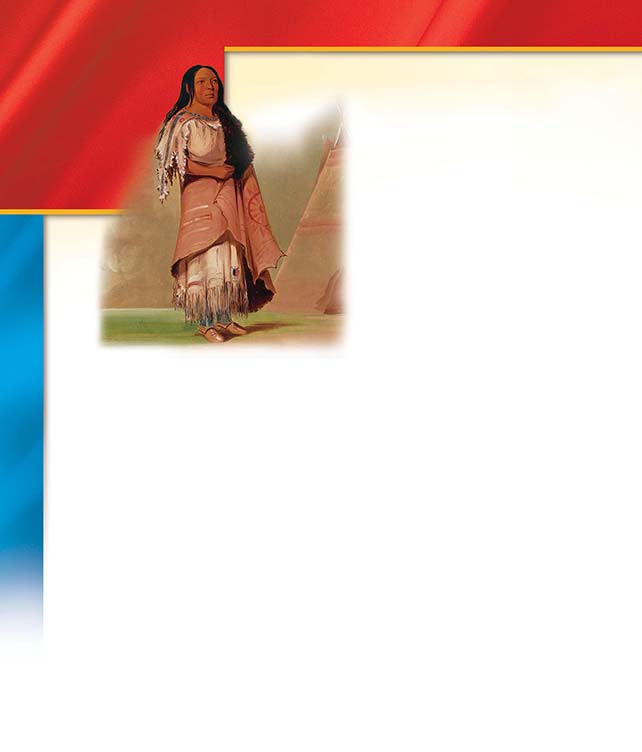SECTION 1: The American Indians

▲ Portrait of a Blackfoot woman by artist George Catlin
WITNESS HISTORY  AUDIO
AUDIO
The First People
Scholars have studied where the first people of the Americas came from. Many American Indian groups have their own stories about how they came into being. This story comes from the Blackfoot people:
“One day Old Man decided that he would make a woman and a child. So he formed them both of clay…. After he had made the clay into human shapes, he said to it, “You must be people.” And then he covered it up and went away. The next morning he went to the place and took off all the covering, but the clay had changed little. The fourth morning, he went to the place … and said “Get up and walk. They did so…. And that is how we came to be people. It was he who made us.”
—Story of the origin of the Blackfoot people
Objectives
- Explain how American Indians may have come to North America.
- Describe the process by which different American Indian groups and cultures developed.
- Describe the major culture areas prior to the arrival of Europeans in North America.
Terms and People
- ice age
- migrate
- Mayas
- Aztecs
- adobe
- Iroquois League
NoteTaking
Reading Skill: Identify Main Ideas As you read this section, complete an outline like the one below with the main ideas.
- The First People of the Americas
- Paleo-Indians
Why It Matters The people who first inhabited North and South America found a land rich in resources and varied in geographic features. As they spread out across the land, they developed distinctive ways of living and surviving. Their cultures represent a central part of our heritage and history. Section Focus Question: How did the spread of civilization begin in the Americas?
The First People of the Americas
Scholars refer to the first humans to live in the Americas as Paleo-Indians. They think these people came from Siberia, a region in Asia that lies just across the narrow Bering Strait from Alaska. Scholars disagree, however, about when and how the Paleo-Indians arrived.
People Migrate to the Americas
Until recently, most scholars insisted that the first Americans were hunters who arrived about 15,000 years ago. At that time, the world was experiencing an ice age, a time lasting thousands of years during which the Earth was covered by ice and glaciers. Much of the planet’s seawater was frozen in polar ice caps. Therefore, the sea level fell as much as 360 feet below today’s level. The lower sea levels exposed a land bridge between Siberia and Alaska. Scholars believe Paleo-Indian hunters crossed this land bridge in pursuit of their favored prey—immense mammals such as mammoths, mastodons, and giant bison.




